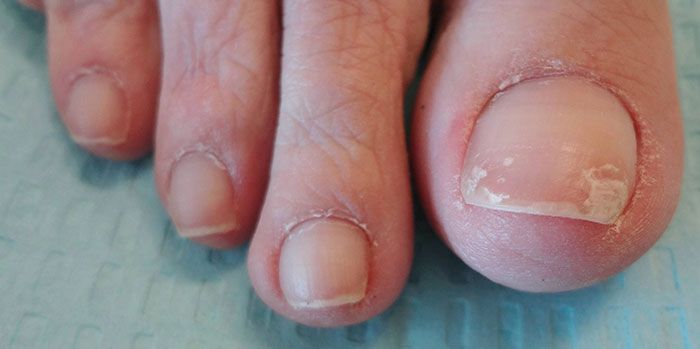- Clinical Technology
- Adult Immunization
- Hepatology
- Pediatric Immunization
- Screening
- Psychiatry
- Allergy
- Women's Health
- Cardiology
- Pediatrics
- Dermatology
- Endocrinology
- Pain Management
- Gastroenterology
- Infectious Disease
- Obesity Medicine
- Rheumatology
- Nephrology
- Neurology
- Pulmonology
White Superficial Onychomycosis
These small areas of white dyschromia are typical of white superficial onychomycosis, often due to dermatophyte invasion following minor trauma. This form of onychomycosis usually responds well to topical therapy.

A 56-year-old woman sought medical attention because of discoloration of both great toenails.
Key point: The patient’s great toenails both exhibited small areas of white dyschromia, but lacked subungual hyperkeratosis or alterations in overall nail shape. This is typical for white superficial onychomycosis, often due to dermatophyte invasion following minor trauma. The patient played tennis daily.
Treatment: The patient responded well to topical application of ciclopirox 0.7% nail lacquer.
Note: In contrast to the more typical form of onychomycosis, which requires systemic antifungal therapy, white superficial onychomycosis usually responds to topical treatment.
